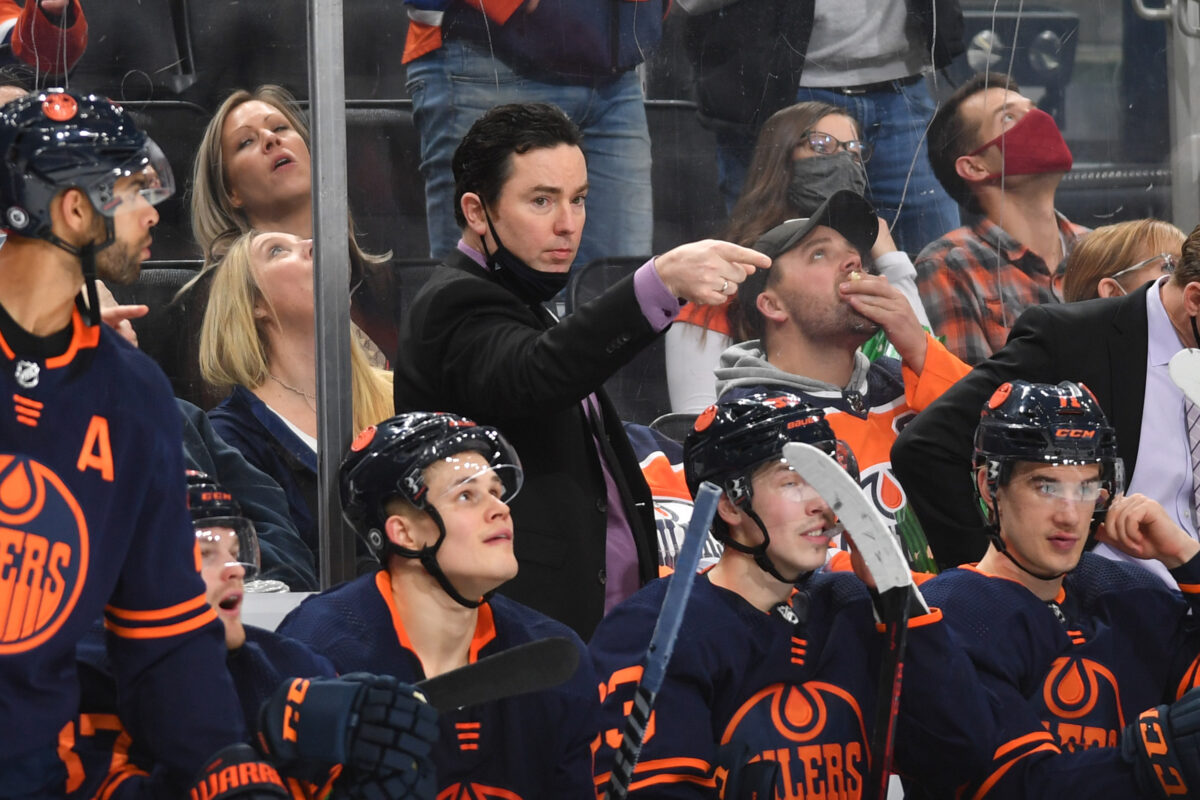Some fans in Edmonton are a bit upset after the result of Game 1 versus the Colorado Avalanche on Tuesday. A back-and-forth, high-scoring affair that offered viewers everything and more than insiders envisioned the series might be, this particular game included things no one expected.
There were 14 goals scored, four goaltenders getting time, what could have been a delay of game penalty to start the second, and an offside call that still has people scratching their heads. In what looked to be a clear offside by the Avs and Cale Makar, a goal just seconds after the Oilers had tied the game 2-2 counted and a failed challenge meant the Oilers were assessed a penalty. Colorado scored in a matter of seconds to start the second frame and it was a two-goal swing, ultimately the difference in the final score.
Let’s not confuse things though: that offside call is not why the Oilers lost Game 1.
The Offside Onside Call
The explanation for the decision essentially boils down to the fact that Makar was not in possession of the puck at the time his teammate (Valeri Nichushkin) tagged up to get back onside. The video review argued that Makar pushed the puck over the blue line from the neutral zone, then didn’t touch it again until his player was onside. Once everyone was, Makar was free to play the puck again and score the goal.
The rule assumes a few things. First, Makar knew what he was doing in that split second. The rule effectively states that as long as the player knows not to “bring” the puck in while his player is offside, there is an opportunity given to get onside. Things happened so quickly, that it’s hard to believe Makar was fully aware of the play as it was unfolding. Unfortunately for the Oilers, this is what the officials are saying Makar did.
Second, the rule effectively suggests that any time a puck enters the zone as a player is tagging up to get onside, as long as it isn’t touched again by the offside team until everyone is onside, the play can continue. What’s so odd about this rule is that we see this go uncalled numerous times in a game. Conversely, we see possession assumed in 9 out of 10 instances.
Related: Avalanche vs. Oilers: 5 Key Storylines That Will Define the Series
For example, when a player skates in backward and essentially puts themselves offside, the player is deemed to have control, thus the play is onside. What happens if that player is also stick handling and the puck leaves the blade of the stick for a split second? Is that player now offside because they are in the zone but the puck isn’t? No, because it is assumed the player is still in possession of the puck. Looking back at the Makar play, it never seems as though Makar isn’t playing the puck in that sequence. He is always in full control. Why then, is he all of a sudden not in possession?
The Issue for the Oilers
Where the Oilers got pooched here is because they weren’t familiar with the tag-up rule as it’s being interpreted by the NHL. What appeared to be a clear offside was an easy call for the Oilers to challenge. But, because they got the challenge incorrect, their ignorance of how the NHL officials in the war room were going to call this play cost them. This had never bitten them in the butt before, thus they didn’t know it could be ruled against them.
The Oilers believed they were going to be thrown a bone and catch a lucky break. It was exactly the opposite. Nazem Kadri ended up scoring on the ensuing power play and it put the Oilers down by two goals when they absolutely believed the guys should have been tied 2-2 at that point.
Not Why Oilers Lost Game 1
Important to remember here is when this all happened. This goal was scored at the end of the first period after the Oilers have played dreadful hockey and were lucky to still be in the game. As they have done many times in the playoffs and regular season, the team played a horrible first period. They also failed to play anything close to defense after scoring a goal, thus giving Colorado immediate momentum back when Edmonton should have used a goal to charge them up.

When Edmonton scored to tie the game in the first, they were just starting to put some shots on the board and get some momentum back. But, another turnover in their own zone — something they did repeatedly — allowed Colorado, specifically Makar, to be in a position to score. Realistically, the score could have been 5-2 or 6-2 for Colorado if not for some key saves from goaltender Mike Smith.
Edmonton choked under the sustained pressure of the Avalanche attack early. With three minutes left in the first period, the shots were 13-3 in favor of Colorado and that might have been generous when trying to describe how lopsided the ice was in the Avs’ favor.
The Oilers tried to play run-and-gun hockey with Colorado. While the skill they have on paper means they can probably get away with that, they also tried to do it without playing defense and/or ensuring proper outlet passes out of their own zone. That’s what cost the Oilers this game and not some whacky interpretation of an onside rule.
If the Oilers don’t come back in Game 2 and play the system Woodcroft has worked so hard to impress upon this team, no offside rule will matter. Game 1 was not indicative of how the Oilers need to play to beat a team that is just as fast and as skilled as they are.

